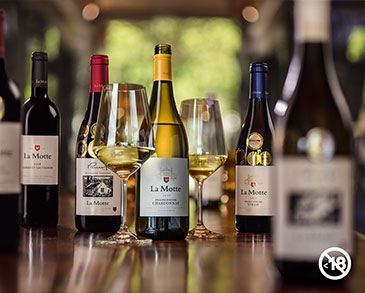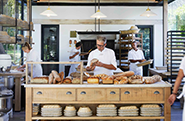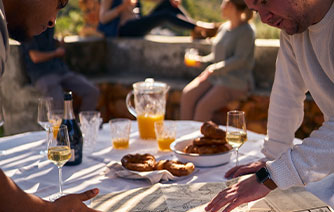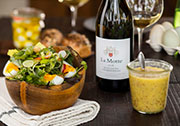
Must is one of the wonderful products of the wine grape harvest that does not only have a rich history but is also a versatile seasonal ingredient in many recipes – even in the modern-day kitchen. It has been a popular ingredient in cooking since ancient times and it was probably the French Huguenots who brought the “recipe” to South Africa. Except for being used as an ingredient in must jam and mosbolletjies (a typical South African sweetish bread – similar to brioche – baked from must and often dried as rusks), must is also used in savoury and meat dishes.
Probably first used as an ingredient for bread and rusks in a wine producing country such as Germany or France, one of the earliest references to bread baked with must, is during the reign of King Edward I (1272-1307). In South Africa mosbolletjies are often eaten fresh with butter or dried as rusks. Traditionally it was served fresh with black coffee early in the morning – similar to the French tradition of serving black coffee and croissants.
Before modern preserving methods, jam was an important way to preserve the sweetness of fruit and must jam was probably the first form of jam made by men. A jar of must jam found in the tomb of the Egyptian king Tutankhamun (ruled ca. 1332 BC – 1323 BC in the conventional chronology) serves as proof!

Must syrup or must jam is made by cooking sweet fermented grape juice until it turns into a thick syrup. The Romans used three different methods:
- Defratum: the liquid was reduced to one fifth of the original volume to form a very thick syrup.
- Sapa: the liquid was reduced to one third of the original volume for a syrup of medium consistency.
- Caroenum: a thin syrup was made by reducing the liquid to two thirds of its original volume.
The Romans also made a sweet must wine (called mulsum) to serve with the first course of a meal. Sweet must was mixed with honey, sealed and after a month passed through a muslin cloth and sealed again for later use. They further used must syrup in sweet-and-sour, savoury and sweet dishes – a certain vegetable recipe with a sweet-and-sour sauce developed by a Roman chef, Apicius was very popular with the Roman rich-and-famous. Traditional South African cookbooks by writers such as Hildegonda Duckitt, shared similar recipes.
A recipe for Duck in a sweet-and-sour sauce (find below) from the Cape Winelands Cuisine cookbook, modernises a traditional recipe that uses must.

Recipe: Duck in sweet-and-sour sauce
The origins of this recipe can be traced back to the Italian chef Scappi (1570). A similar recipe also appears in an eighteenth-century Cape cookbook.
Ingredients Serves: 4
1 duck
2 unripe plums, chopped
1 cup (250ml) coarse sea salt
1 cinnamon stick, 1 tsp (5ml) black peppercorns and 2 whole cloves, wrapped in a muslin bag
1 onion, chopped
1 cup (250ml) must syrup (available from wine farms and farm stalls)
2 cloves garlic, crushed
½ cup (125ml) red wine vinegar
1 Tbsp (15ml) chopped fresh root ginger
¼ cup (60ml) verjuice
1 tsp (5ml) cold butter
½ cup (125ml) Cape gooseberries / dried cherries
Method
Prick the skin of the duck with a fork and cover with the salt. Refrigerate overnight.
Wipe off the salt with a clean, wet cloth.
Preheat the oven to 120°C (250°F).
Grease the oven rack and place the salted duck on the rack.
Scatter the chopped onion in a drip tray and place it underneath the duck.
Roast the duck for 6 hours. Turn the heat up to 160°C (325°F) and roast for a further 20 minutes.
Remove from the oven and set aside.
Place the onions from the drip tray, the must syrup, vinegar, verjuice, gooseberries or dried cherries, plums, spice bag, garlic and ginger in a saucepan and cook until thick.
Discard the spice bag and beat in the cold butter.
Carve the duck and serve with sauce.
Must at La Motte
La Motte celebrates the special harvest season with a Harvest Tasting where visitors are encouraged to taste must from the tanks and enjoy freshly baked mosbolletjies, must syrup and even lamb with a must basting.

Mosbolletjies, must jam and other harvest-inspired produce are being sold in the Farm Shop on the estate and Pierneef à La Motte restaurant’s seasonal menu incorporates grapes in all its forms.











